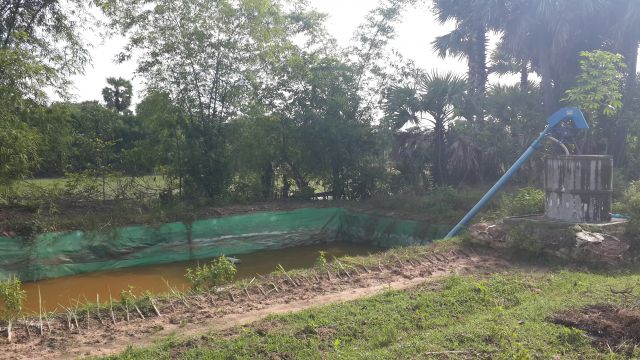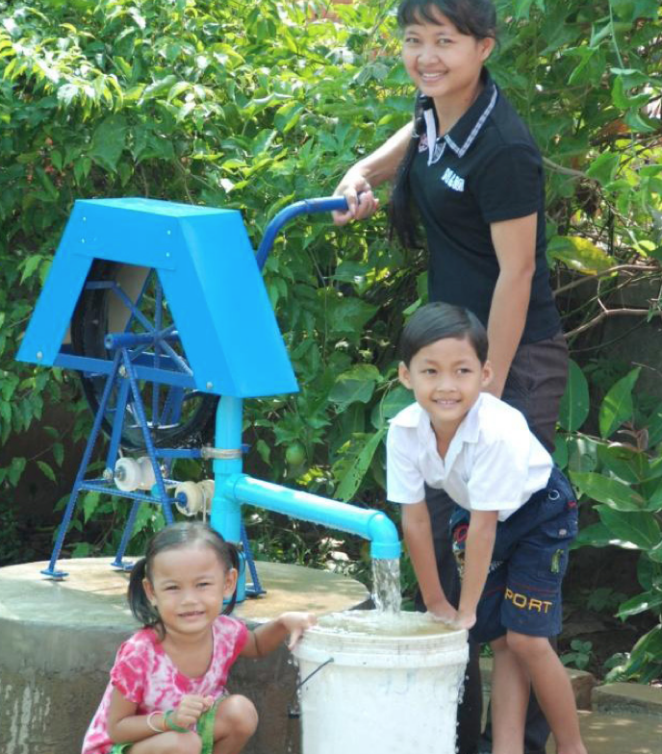Case-study /
Pumps and Ponds: Responding to drought attributed to climate change in Svay Rieng, Cambodia


Summary
Cambodia farmers are having to cope with intensifying dry seasons caused by climate change, through diversification of their livelihood.
SNV (not-for-profit international development organisation founded in the Netherlands)has been exploring ways to boost disaster preparedness through mainstreaming climate smart agricultural practices for smallholder farmers, with a particular focus on Svay Chrum district, part of Svay Rieng province in the southeast of Cambodia.
Following a feasibility study, a climate change adaptation pilot project was implemented from July 2012 in cooperation with local partner the Cambodian Farmer’s Association Federation of Agricultural Producers (CFAP). There are two main elements:
-
Promoting vegetable crop production through water storage and supply system enhancement (by use of a Rovai pump together with tarpaulin-lined ponds); and
- Rice production enhancement through wind pump water supply systems.
Both pilot projects aim to alleviate farmers’ vulnerability to prolonged drought, and at the same time to increase production through additional crop cycles. Using simple technology to replace diesel- fuelled pumps, which are costly to farmers and the environment, the result is improved profitability. Moreover, food security and nutrition are also improved through the additional benefits of adding extra vegetables to dietary intake.
So far SNV has subsidized the cost of initiating adaptation practices among the target groups, and seeks ways to upscale and sustain the successes so far.
Opportunities
- Improved cultivation practices can be introduced to farmers and further intensify production, including proper trellising, proper mulching, and/or better irrigation systems e.g. drip irrigation.
- Awareness-raising on climate change will help farmers understand the need to change and adapt their production practices.
- Though rice is the staple crop for securing food intake, vegetable cultivation is usually a subsidiary income- generation activity, providing cash to support daily living costs.
- The relative profitability will encourage farmers to focus on surface water harvesting rather than ground water.
- Further production intensification is possible through improved cultivation techniques and water-saving systems (e.g. drip irrigation) once the project scales up.
- Farmers can also be informed about the possibilities that the pond-and-pump systems offer. Compared to rice, vegetable crops have a higher market value, afford more varied nutrition and yet are quicker to grow and require less water.
- Further awareness-raising on the causes of climate change and adaptation opportunities can be delivered together with technical training.

Photo: Ideas at Work
Gender aspects
The pilot project has gender aspects. Before the pilot project, women spent an average of 70 hours a year on pumping and carrying water to irrigate 50 square metres of land whilst men spent about 123 hours per annum. To cover 410 square meters, this is 21 hours per cycle for women and 37 hours for men.Following the introduction of the improved water storage system, women spent 17 hours on Rovai pump pedalling and watering per cycle whilst men spent 31 hours.Lessons Learnt
- During the pilot, farmers became aware of the increased profit they could gain and began sharing the cost of renovating ponds, including the labour and materials needed.
- Farmers also benefitted from the opportunity the ponds gave them to diversify into raising fish and ducks. Moreover, the ready supply of water augments disaster preparedness, giving farmers a solution to put out dry season fires.
- This kind of interest from the target communities encourages us to sustain and upscale the pilot project results.
- The technical capability to deal with equipment breakage is still of concern. While most farmers attended the maintenance and repair training provided by SNV, they did need close follow-up.
